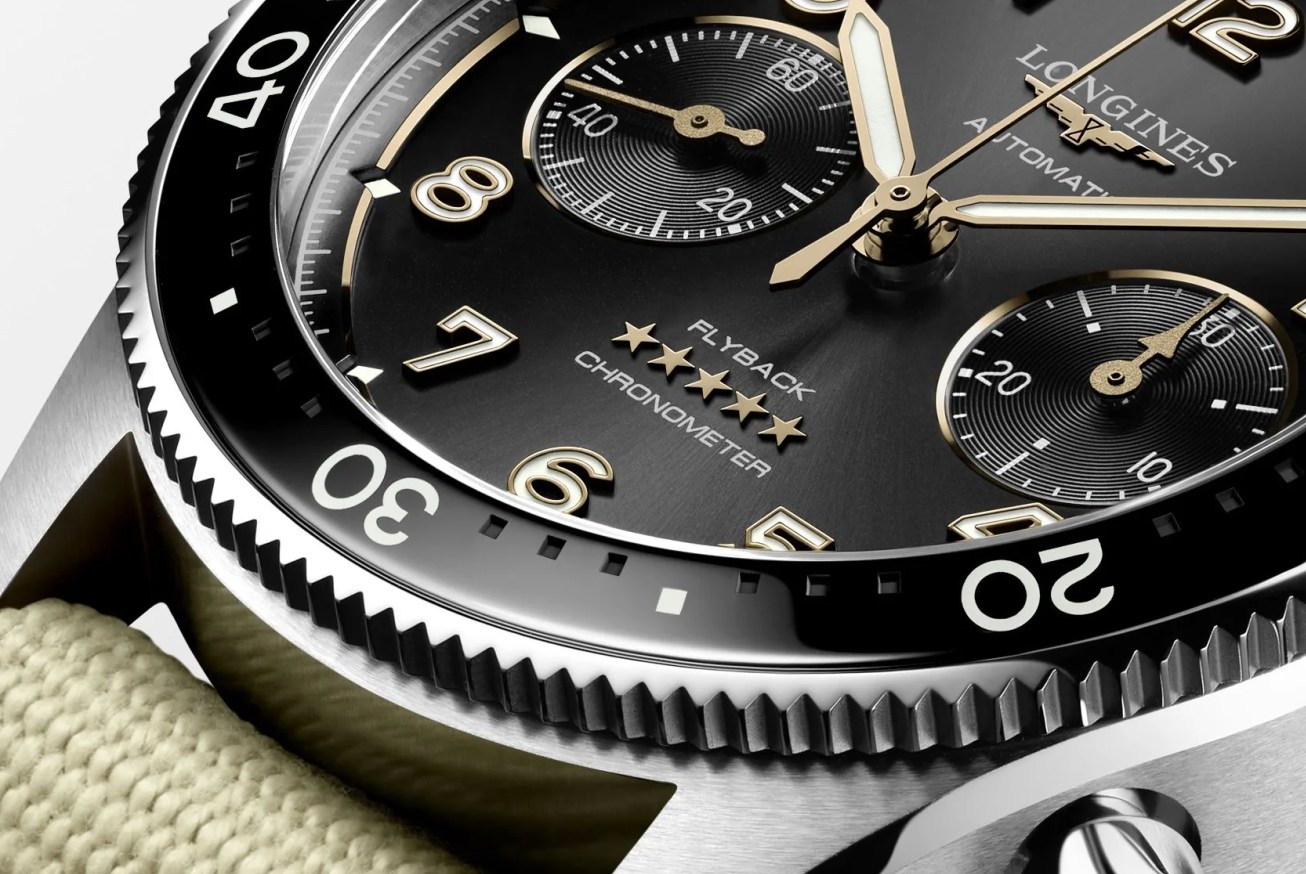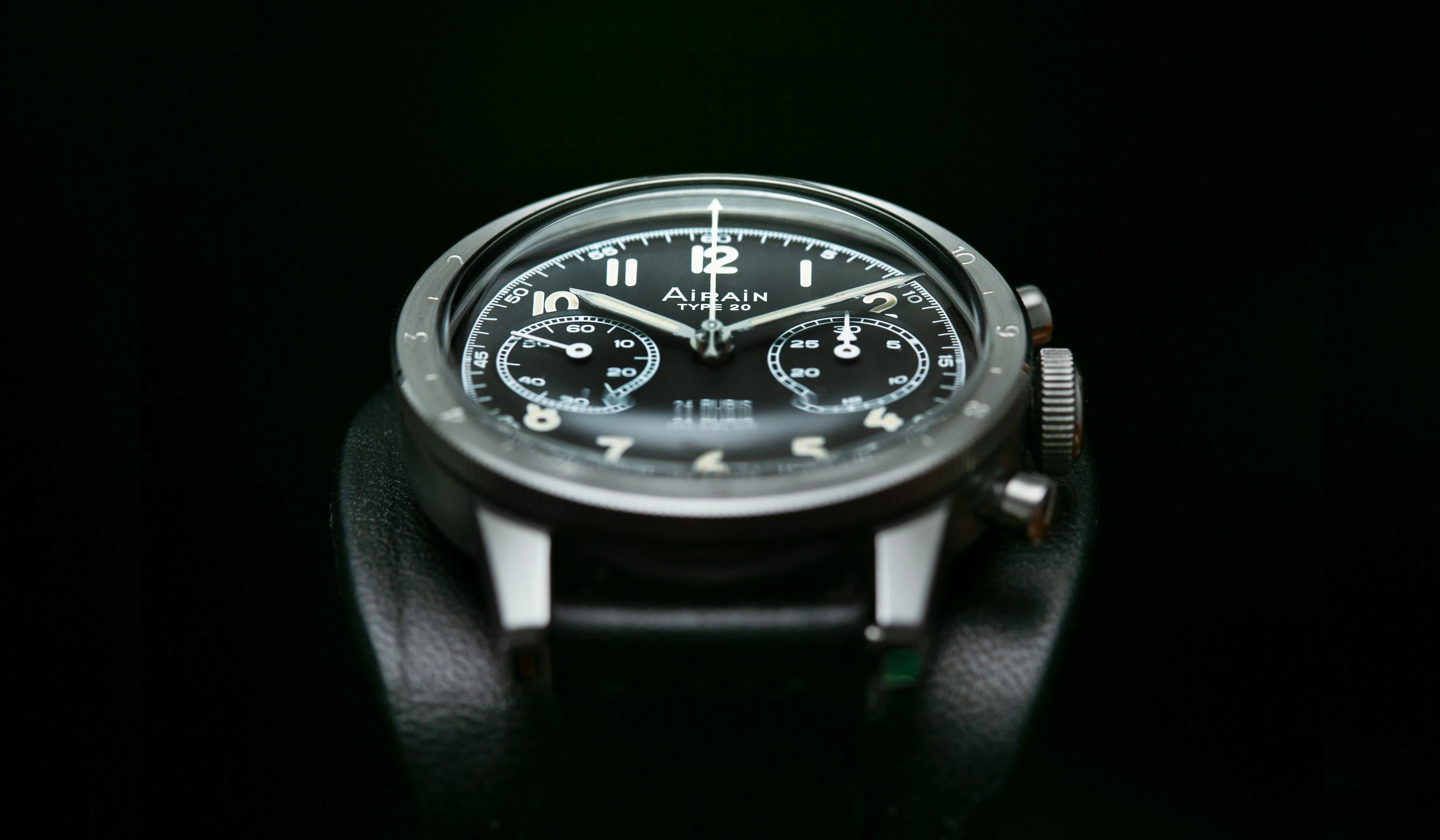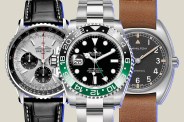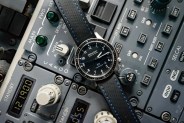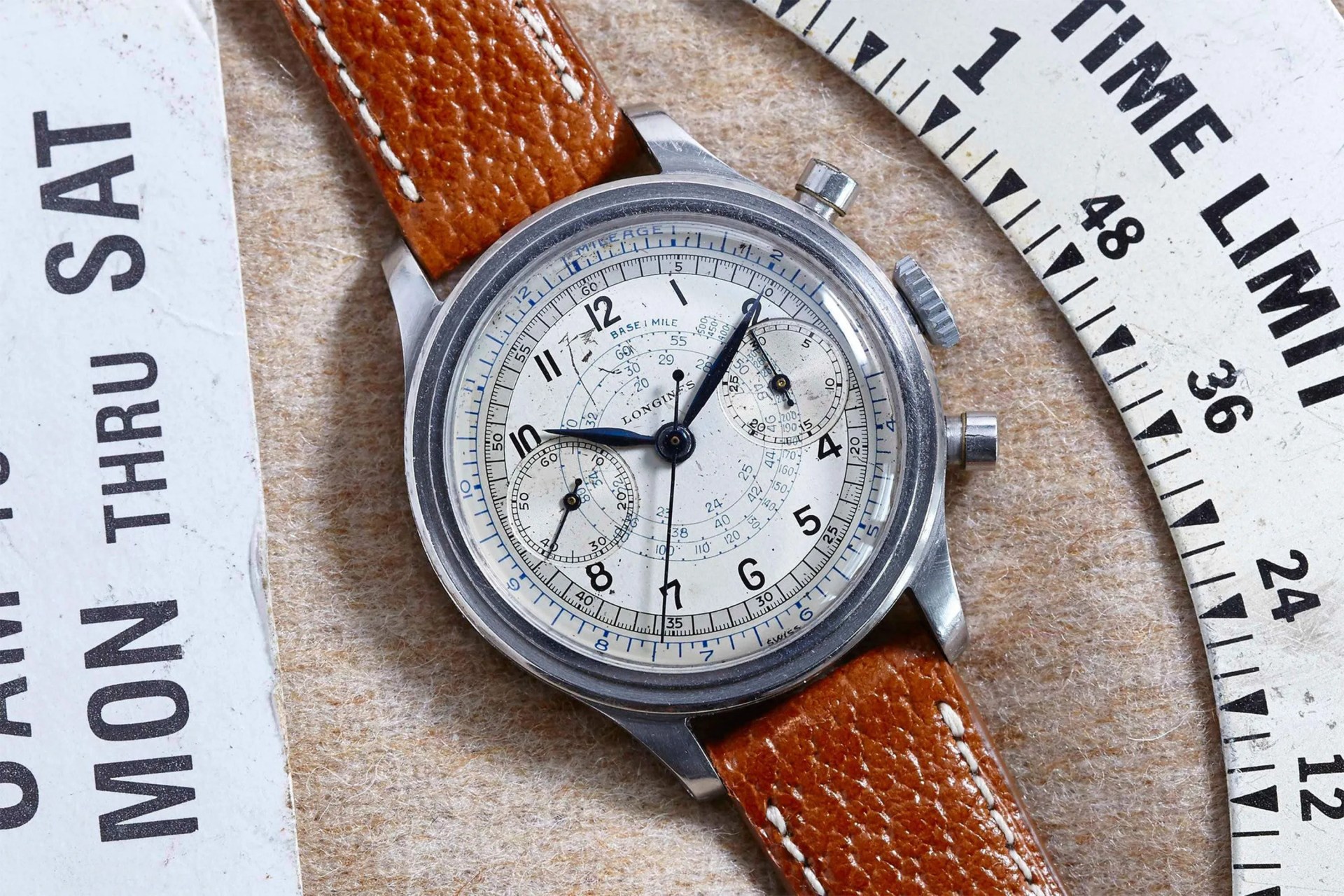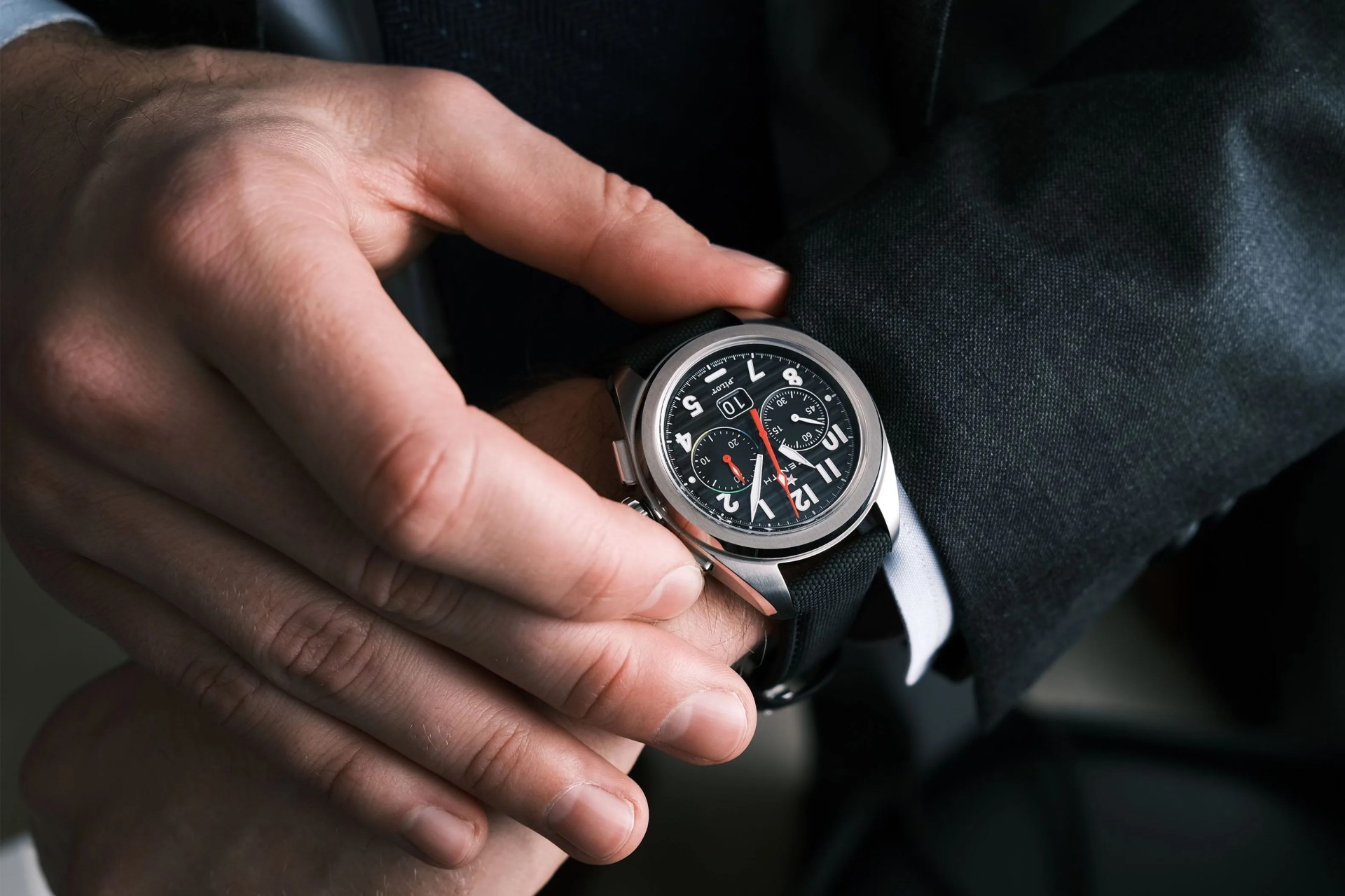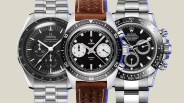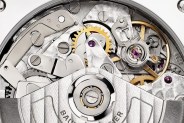There are the sporty chronograph watches everyone loves, and then there are certain kinds of chronographs that are special. Often, you can’t even tell by looking at them that these watches are any different from chronographs offering the standard variety of stopwatch feature — and that’s because the difference lies in their internal mechanics and functionality. You’ve got the likes of the rattrapante and the monopusher, but one of the most historically interesting and increasingly popular varieties of these “exotic” chronographs is known as the flyback.
“The flyback function allowed pilots to swiftly reset the chronograph while maintaining continuous timing, making it ideal for recording multiple time intervals with speed and accuracy.”
From reissues of vintage military pilot’s watches from the likes of Breguet and Airain to modern designs from big players like TAG Heuer, Zenith, Longines and others, the flyback has been making a comeback.
The differences in the way a flyback operates compared to a “regular” chronograph might at first seem tiny, almost negligible. But they can make enthusiasts’ eyes light up and watch brands charge more. But if you’re not familiar with the history and complexity the flyback adds to a more standard chronograph, you might wonder what all the hoopla is about. You might even find yourself asking, “what is a flyback chronograph, anyway?”
